I love houseplants as much as the next person. That is why I am currently building a new plant stand, because I ran out of room for all my plant babies. You could say I have too many, but then you would be wrong because there is no such thing.

Anyway, I also have a few four-legged babies, too – cats, to be specific. And having a few of these fluffy friends living in the house means that I need to pay close attention to the plants I also bring into the space. Not all plants are safe around cats and dogs.
You certainly don’t need to give up your indoor jungle and love of plants. In fact, you don’t have to give up houseplants altogether, just because you have pets in your home. Check out these houseplants that are safe to have around your dogs and cats. You just need to be extra careful about accidentally bringing in plants that may be harmful to your pet.
Even if you have the most well-behaved cat or dog (or both!) in the world, you still have to plan for the worst. It is a possibility that your fur baby may take a little nibble of a plant at some point. No matter where you put the plants, and no matter how disinterested they are, it’s still a possibility. And us responsible pet owners should avoid bringing home toxic houseplants. It’s the simplest way to ensure that our fur babies stay safe!
Do yourself, and your pet, a favor by checking this list of plants. While many of them are completely harmless to us humans, they may have adverse – and even deadly – effects on your pet. For a more extensive list, and a printable option, you can also check the ASPCA’s list of poisonous plants.
Pothos
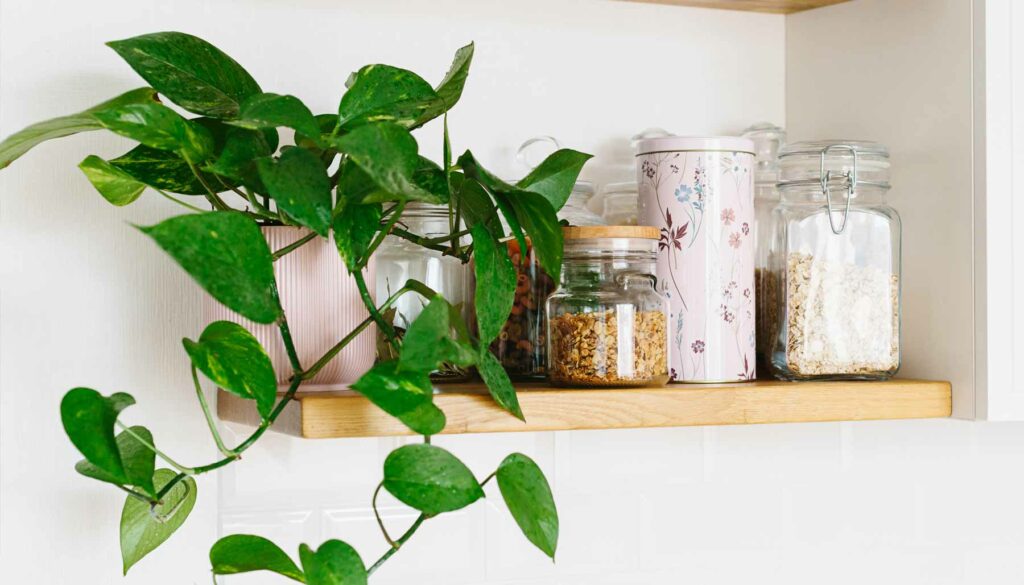
Pothos are incredibly popular houseplants. They are easy to please, fast-growing, and there are plenty of different varieties. Unfortunately, this plant, also sometimes called “devil’s ivy,” is bad news for pets. It can cause their mouths to start burning and swell. If they manage to also swallow the plant, they could have muscle spasms and seizures.
Hyacinth
Hyacinths are beautiful and interesting, and their arrival on store shelves is like a signal of spring. They are a popular gift in springtime, but they can be toxic to cats and dogs. They may cause severe vomiting, diarrhea, bloody stool, and tremors. The bulbs of these plants are particularly toxic, though the entire plant is harmful to pets.
Tulip
Similar to hyacinths, tulips are another bright indication of spring and are often gifted during the spring. These pretty flowers are toxic to dogs and cats, too. The toxins that cause issues are most concentrated in the bulbs, but the plant, in general, is a no-no for pet parents. Should your pet take a nibble of this plant, it can cause symptoms such as excessive drooling, vomiting, diarrhea, and even depression. If they eat enough of it, it could be fatal.
Aloe Vera
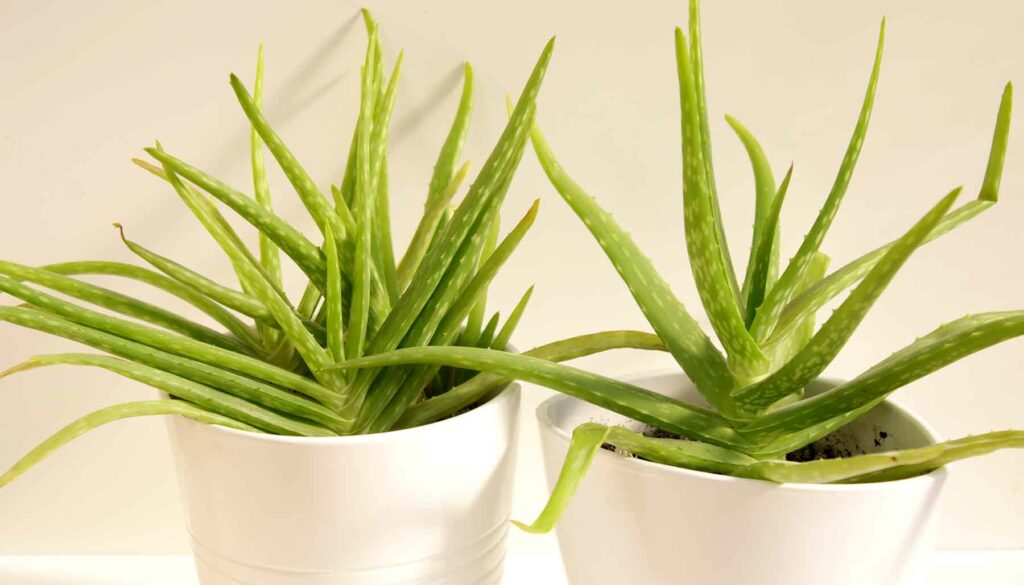
Aloe is a wonderful plant for us humans because we can use it for its medicinal properties. But when it comes to cats and dogs, it’s not so helpful. The latex-like chemicals in the leaves could cause severe digestive distress in your pet. They may exhibit vomiting, diarrhea, and other symptoms.
Begonia
Begonias are a very common houseplant, because of their very pretty blooms. The richly colored foliage and cheerful blooms are certainly lovely to look at. But unfortunately, this plant is toxic to cats. Just a nibble will result in irritation, drooling, and vomiting – not to mention, a costly trip to the vet.
Azalea
Azaleas are more commonly planted outdoors as a blooming shrub. You will sometimes find potted azaleas in the springtime, and they are also often used to create little bonsai trees that are kept indoors. This member of the Rhododendron family is incredibly toxic to dogs. If they chomp on the leaves, you can expect diarrhea and vomiting at best. And at worst, coma or death. Azaleas are only moderately toxic to cats, but it’s still advised to keep them away because they can cause sickness for our feline friends.
Lily
I love lilies, but any kind of lily is bad for your cat. Even just the smallest nibble could destroy your pet’s kidneys. Ingestion of the leaves or flowers can lead to irritation, vomiting, loss of appetite, and even kidney failure. Yes, this applies to both potted lilies and flowers in bouquets.
Asparagus Fern
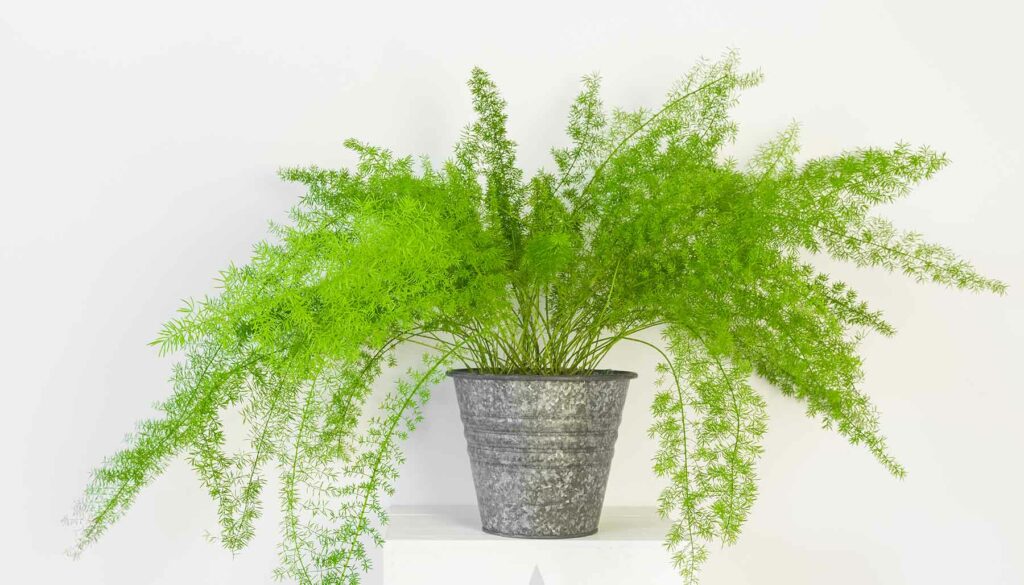
The frilly, fun-looking asparagus fern should never be brought into a house with pets. It’s toxic to both dogs and cats. The plant contains saponins, a steroid that can cause severe problems for pets. It may cause dermatitis in pets. The berries are also poisonous to your pets. We’re talking about vomiting, diarrhea, and severe stomach pain.
Snake Plant
Snake plants are wildly popular houseplants that I keep seeing everywhere, thanks to their striking appearance and how easy they are to care for. But, they are bad news for cats and dogs. This is another plant that contains saponins. Although this plant isn’t as toxic as some others on this list, ingestion can cause nausea, vomiting, and diarrhea.
Philodendron
There are many variations of philodendrons, and they are all popular as houseplants because of how easy they are. Unfortunately, all varieties of this plant contain oxalate crystals, which will burn the mouths of dogs and cats. Chowing down on this plant can also cause excessive drooling, trouble swallowing, and vomiting.
Poinsettia
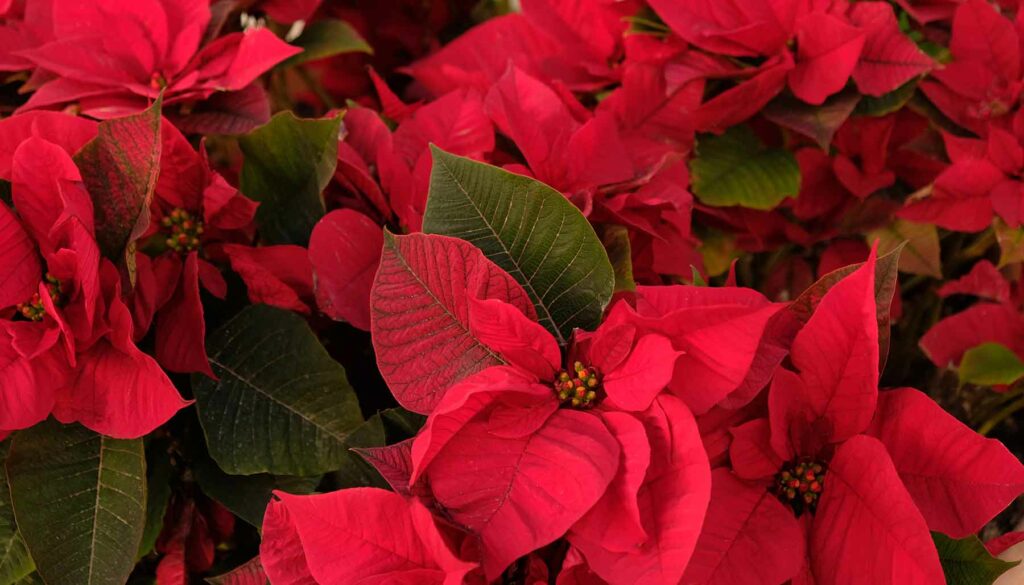
It’s not the holidays without poinsettia plants everywhere, right? Well, unless you have some four-legged family members. Ingesting poinsettia isn’t normally deadly to cats and dogs, but chewing on this plant can cause irritation in the mouth or stomach. It can also lead to vomiting and diarrhea. Cleaning that up doesn’t sound like a good way to spend the holiday season if you ask me.
Sago Palm
Sago palms are so pretty, but they aren’t worth it if you have pets in your home. All parts of this plant are poisonous to our furry friends and contain several toxic compounds. The seeds in particular are the most toxic and are coincidentally much easier for pets to eat than the spiky fronds. Ingestion of even a small amount can cause serious effects, with pets potentially suffering liver damage or liver failure.
English Ivy
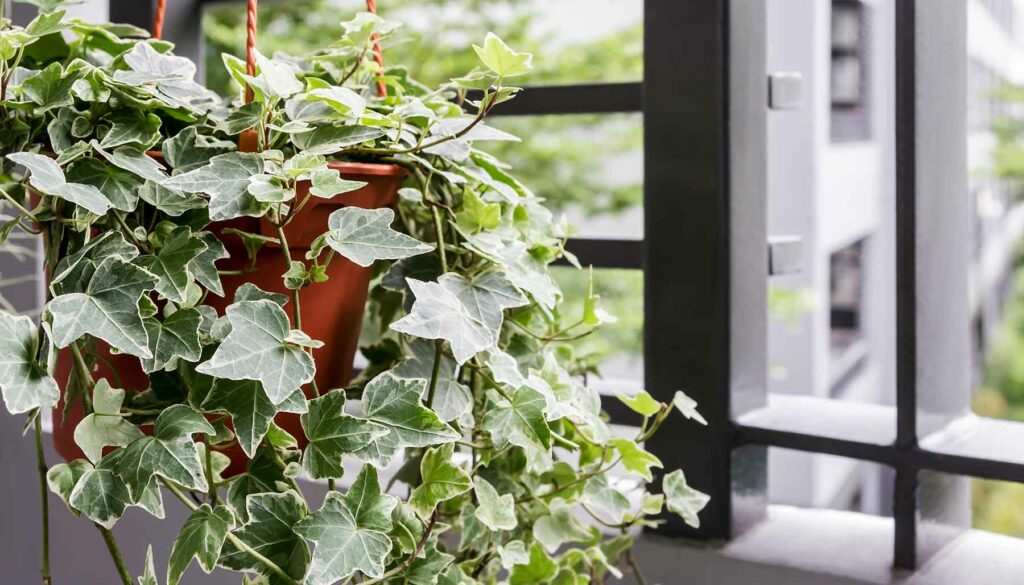
This low-maintenance houseplant is a popular choice for people who want to bring a little greenery and extra oxygen into their homes. It’s great for purifying the air. Unfortunately, it’s not so great for pets. Both cats and dogs will become sick if they eat English Ivy. The leaves in particular are toxic, containing saponins. Symptoms include breathing problems and skin rashes. If left untreated, it can lead to paralysis.
Dumb Cane
Dieffenbachia is also sometimes called dumb cane and gained that nickname thanks to the effect it has when you chew on it. Dumb cane contains oxalate crystals, which cause irritation and swelling of the mouth and throat. Yes, this even affects us humans. It does the same thing to our pets, giving them that burning and irritating sensation in their mouths, tongues, and lips. Difficulty swallowing, excessive drooling, and vomiting are also symptoms.
Chrysanthemum
If you enjoy chrysanthemums, you may do best to keep them away from any pets. Although it is definitely tempting to bring them indoors when the weather starts to get too cold, they are a danger to cats and dogs. They contain a few different toxic substances that can cause dermatitis, vomiting, diarrhea, excessive drooling, and lack of coordination.
Jade Plant
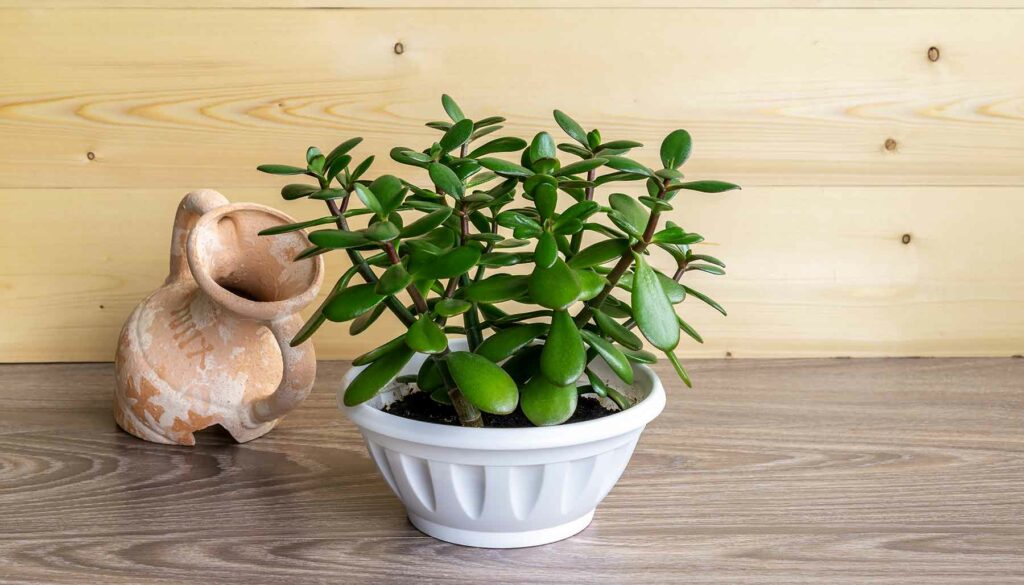
Jade plants are so popular and I see them all the time. However, they are not safe for pets, especially cats. While they are toxic to both cats and dogs, cats seem to be more sensitive. Jade plants can cause gastrointestinal irritation, like vomiting and diarrhea. It may also cause a lack of coordination, lethargy, muscle tremors, and even an elevated heart rate.
Kalanchoe
I love the beautiful flowers and bright leaves of these plants, but they are not safe for cats and dogs. They contain bufadienolides, another steroid that affects pets. It can cause gastrointestinal problems like vomiting and diarrhea, but it can also cause arrhythmia, or an irregular heartbeat.
Dracaena
I can imagine that my cats would love to play with the long fronds of a dracaena plant, but they definitely should not. These low-maintenance plants are another one containing saponin, the chemical compound that is found in others on this list. Nibbling on this plant can cause excessive drooling, abdominal pain, vomiting, weakness, and lack of coordination.
Geranium
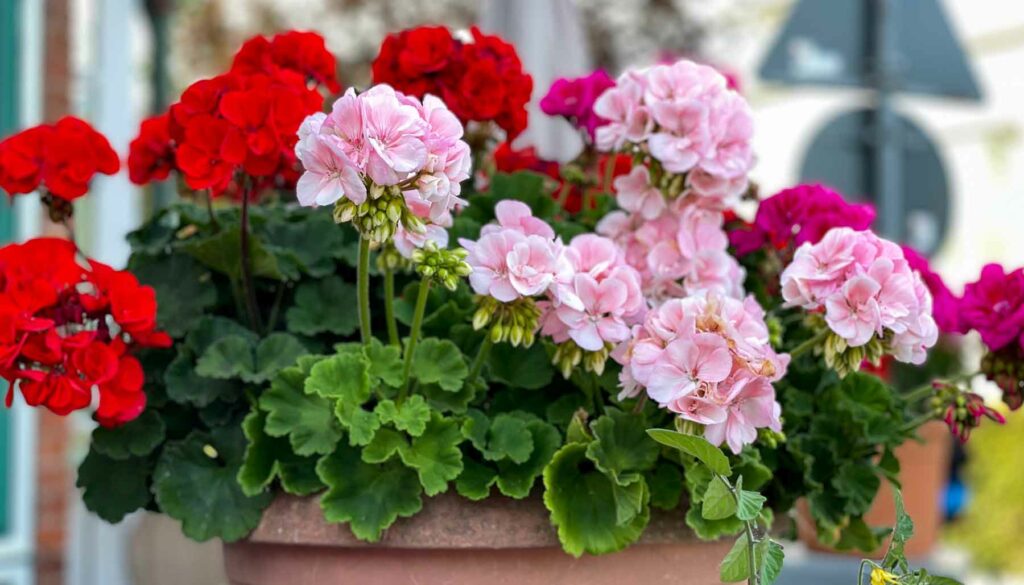
Geraniums are beautiful, so it is no surprise that they are a popular choice for houseplants. But unfortunately, these plants contain the essential oils linalool and geraniol, which can cause gastrointestinal problems or skin irritation. If your pet chomps on a geranium, symptoms may include diarrhea, vomiting, lethargy, a lack of appetite, and dermatitis.













